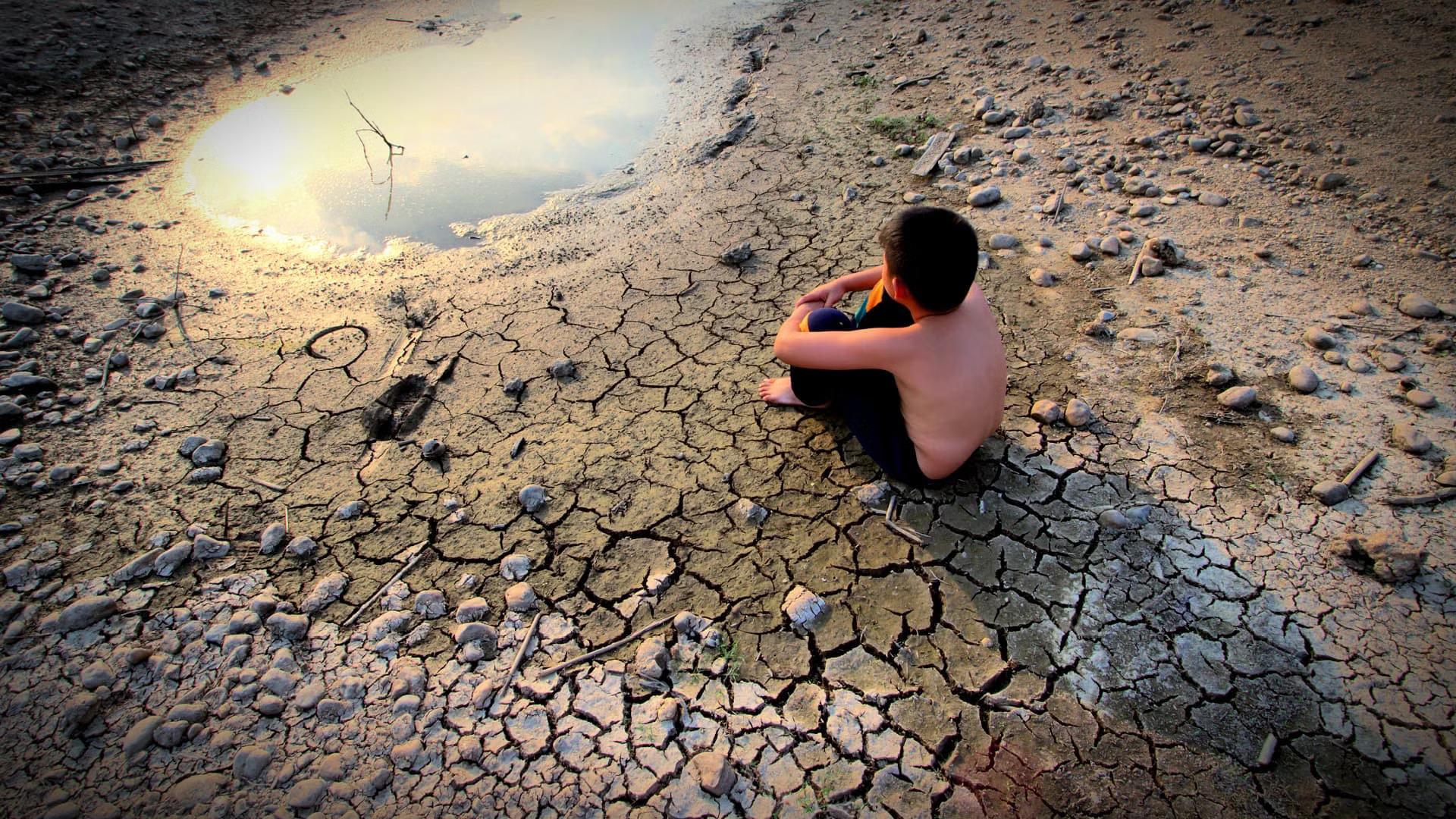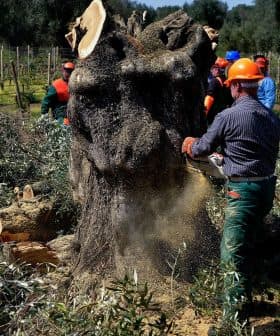New Research Sheds Light on Changing Nature of Droughts

New research published in the International Journal of Climatology focuses on understanding the factors behind prolonged droughts in Italy, which are becoming more intense and lasting longer due to rising temperatures. The study found that widespread multi-year droughts in Italy are triggered by specific atmospheric circulation patterns, such as the North Atlantic Oscillation, and that reliable predictions for these events are still a challenge, highlighting the importance of innovative water resource management and the need for more trustworthy seasonal forecast models.
New research explores the dynamics behind droughts persisting in specific areas for extended periods.
The study, published by the International Journal of Climatology, focused on Italy to understand the factors triggering multi-year drought phenomena.
“Even if these phenomena can be considered cyclical and typical in the region, they now tend to last longer, their intensity is increasing and their impacts are broader,” Salvatore Pascale, a researcher at the University of Bologna’s department of physics and astronomy, told Olive Oil Times.
Considering soil moisture loss alone, droughts are clearly becoming more severe, with longer-lasting consequences.
The scientists defined a widespread multi-year drought as an event lasting more than 12 months, often extending over two or three years.
To measure these conditions, the authors relied on the standardized precipitation evapotranspiration index (SPEI), which considers precipitation and moisture loss due to evapotranspiration. Evapotranspiration occurs when water evaporates from water bodies and soil and is transpired by plants.
A widespread multi-year drought begins when it affects at least 30 percent of Italian territory (SPEI +1) and ends when more than 70 percent returns to near-normal conditions (SPEI ‑1).
See Also:Regenerating Soil Helps Tackle Water Crisis, Experts SayThe study focused on events over the last 123 years in Italy.
“We found that such events frequently impact more than 30 percent of the territory,” Pascale said. “In most cases, these droughts affected nearly the entire country, reaching about 60 to 70 percent of Italy during their peak.”
Even the most recent intense widespread multi-year drought involved large areas of Italy. “One might assume the warmer south is most affected, but that’s not the case,” Pascale said.
When droughts persist, they worsen conditions in areas already impacted by accelerating evapotranspiration.
“Temperature is the primary factor influencing this process,” Pascale said. “Other factors like wind also matter, but temperature is dominant. Surface temperatures are rising due to global warming, causing a decline in available surface water and soil moisture.”
The loss of soil moisture directly impacts agriculture and soil fertility.
“Considering soil moisture loss alone, droughts are clearly becoming more severe, with longer-lasting consequences,” Pascale said.
The researchers emphasized how temperature has become as critical as rainfall in shaping drought dynamics. While rainfall volumes have not decreased, the capacity of soil and vegetation to retain water has significantly declined due to rising evaporative demand.
Currently, rainfall volumes have a limited impact in a rapidly changing scenario.
“We observe worsening extreme events becoming more intense and frequent,” said Pascale, specifying that overall rainfall volumes remain relatively stable.
“Instead, temperatures continue rising, accelerating the depletion of surface water,” he added.
In Italy, higher temperatures also shorten the snow season. Alpine snow accumulation is reduced and melts earlier than in the past.
“The mountain water we historically relied upon in summer is increasingly unavailable. The buffering role of snow and water storage historically played by Italy’s mountains is diminishing,” Pascale said.
Reduced snow also means critical rivers for agriculture, such as the Po River, may no longer provide sufficient water to regions heavily dependent on farming.
“The aggressiveness of the widespread multi-year drought event from 2021 to 2023 was astonishing. The Po River reached levels never recorded in the last 200 years,” Pascale said.
The study highlights that recent drought severity results from persistent weather patterns maintaining high-pressure systems over Europe, blocking precipitation.
Widespread multi-year drought events in Italy originate from specific atmospheric circulation patterns, such as the North Atlantic Oscillation (NAO).
“The persistence of the positive phase of the NAO results in less rainfall over the Mediterranean, as Atlantic storm systems are pushed toward the northeast, toward Scotland and Scandinavia.”
“Some of these conditions persist over Europe for extended periods, sometimes recurring multiple times within two or three years,” he added.
In such scenarios, widespread multi-year droughts occur predominantly under anticyclonic conditions, characterized by higher-than-average temperatures and reduced rainfall.
“These phenomena reflect normal atmospheric variability and are not driven by global warming,” Pascale said. “Understanding if and how global warming influences atmospheric circulation dynamics is very challenging; climate models on this topic remain unreliable.”
“Global warming means the climate retains more energy, causing temperatures to rise, a thermodynamic reality,” Pascale added.
“Rainfall, however, depends not only on thermodynamics but also on dynamics such as wind patterns,” he continued. “Rainfall forms when winds converge, accumulating humidity. That accumulated water must then be released as precipitation.”
According to the researcher, volumes dependent on wind and circulation dynamics are more complex than temperature-driven changes.
“That means we need significantly more time and further warming to observe clear trends,” Pascale said.
The authors cross-checked data from two distinct climate datasets to strengthen their findings and utilized precipitation-only and combined indices.
This approach helps address regional data discrepancies and enhances confidence in the study’s conclusions.
What researchers do know for sure, however, is that droughts will become more severe, with increasingly harsh impacts on affected areas.
“This means wise, innovative and dynamic management of water resources becomes crucial. Not only for populations and agriculture but also for industry, which consumes approximately 30 percent of potable water,” Pascale said.
Climatologists are not yet capable of reliably predicting widespread multi-year drought events. However, extensive research is underway to develop trustworthy seasonal forecast models.
“We foresee a future where seasonal forecasts become reliable enough to predict when widespread multi-year droughts will start,” Pascale said. “We have short-term forecasts, which we use daily, and long-term climate projections spanning decades or even centuries.”
“In between are seasonal forecasts, such as projections made in April for the upcoming summer,” he added. “These forecasts account for predictable and slowly evolving climate factors, like El Niño events, triggered by warming Pacific Ocean waters.”
The goal is forecasting weather three to six months in advance.
“However, these models are not yet reliable, with high levels of uncertainty. The good news is that extensive research is underway, highlighting their potential importance in our rapidly changing climate,” Pascale said.
Predicting widespread multi-year drought would enhance the ability of countries to adapt.
“Adaptation is essential because we are already experiencing climate change. In many sectors, adaptation is our only viable response, necessitating measures to mitigate drought impacts,” Pascale said.
“But adaptation doesn’t solve the root problem. True mitigation of global warming requires dramatically reducing or even eliminating greenhouse gas emissions,” he added.
“Should humanity ever achieve this goal, it will still take considerable time. Meanwhile, adaptation, alongside developing more reliable seasonal forecasts, remains our best strategy,” Pascale concluded.









